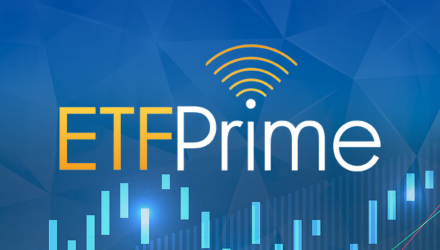On this week’s ETF Prime, host Nate Geraci speaks with ETF Trends and ETF Database’s president Tom Hendrickson about how advisors view and use commodity ETFs in current markets. Later Geraci is joined by Yasmin Dahya Bilger, managing director and head of ETFs at Engine No. 1, to discuss the power of engagement and proxy voting. The show closes with Tommy Mancuso, president and founder of the BAD Investment Co., who talks about the B.A.D. ETF (BAD).
Commodity ETFs have become an extremely popular choice for many advisors and investors in the inflationary environment that the U.S. is experiencing, compounded by the supply pressures and disruptions from the war in Ukraine. As early as last summer, Hendrickson explains that advisors were beginning to research commodities on the ETF Trends and ETF Database websites as inflation concerns began to bubble to the surface.
In a recent survey conducted last week by ETF Trends, 52% reported that inflation was still their primary concern, with market valuations the next highest concern at 33%.
“When you drill into that question around the flash in the pan, where do commodities fit, we asked that same advisor community what their plans for allocating to commodity funds and ETFs were, Nate; 77% of them said they were looking to increase allocations or looking for new funds or ETFs to gain commodity exposure,” Hendrickson said.
This strong and continued interest and inflows into commodities reflects not a tactical, short-term shift but, instead, a larger, more strategic one, Hendrickson believes, aligning for a long-term portfolio positioning. Advisor interest has shifted from where it was a year ago, with a reversal of engagement on equities and commodities from priorities a year ago.
“U.S. large-cap tech has seen a significant decrease in attention from the advisor community compared to how they’re looking at the commodity space,” Hendrickson says. “It really speaks to this five or eight percent of the portfolio construction and how advisors are thinking about the broad allocation of assets and ultimately where they’re looking to gain exposure to certain types of return profiles.”
Broad-based commodity ETFs such as the Invesco Optimum Yield Diversified Commodity Strategy No K-1 ETF (PDBC) has been raking in money this year; so far, YTD, the fund, has brought in $2.75 billion of inflows. Smaller funds that are broad-based commodity ones, such as the Direxion Auspice Broad Commodity Strategy ETF (COM), are experiencing significant inflows this year.
Hendrickson and Geraci also discussed advisor sentiment towards investing in bonds in the current market regime.
Proxy Voting and ‘BAD’ Investing
Next on is Yasmin Dahya Bilger, managing director and head of ETFs at Engine No. 1, who talks about the Engine No. 1 Transform 500 ETF (VOTE), a fund that looks vanilla in its investment in the S&P 500 but that focuses on the proxy share voting rights it gains through investment, and engagement opportunity with companies.
“The real opportunity from our perspective was to leverage the power of passive investing, which, as we know, is where assets have accumulated and continue to rapidly accumulate, but really focus on pushing companies in the way we vote,” Bilger says.
Bilger explains that historically, the typical S&P 500 company’s board has voted against 80% of initiatives related to shareholders’ climate and social concerns. Engine No. 1 focuses on promoting transparency and accountability for companies through its proxy voting.
Last on is Tommy Mancuso, president and founder of the BAD Investment Co., who discusses wanting to appeal to the rush of new, young retail investors that started during the meme stock investment craze of the early pandemic, offering them long-term, sustainable investment opportunities.
The B.A.D. ETF (BAD) was launched out of this desire, explains Mancuso, as well as the lack of any statistical proof that ESG will outperform in the long-term, and tracks an index based on betting, alcohol, and drug companies (pharmaceuticals and biotech, and a 10% allocation to cannabis).
“We don’t think social stigmas should be a primary factor when making investment decisions; we think if we’re making decisions from an investment standpoint, it should be what’s going to maximize returns at the end of the day,” Mancuso says.
Listen to the Entire ETF Prime Episode Featuring Tom Hendrickson:
For more ETF Prime podcast episodes, visit our ETF Prime channel.

